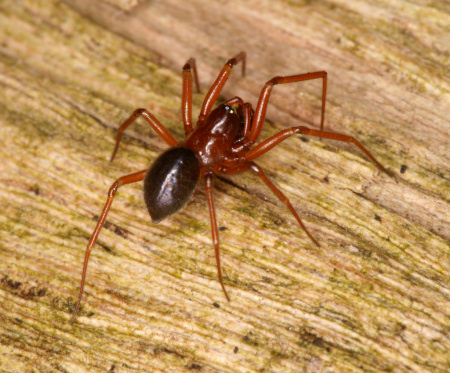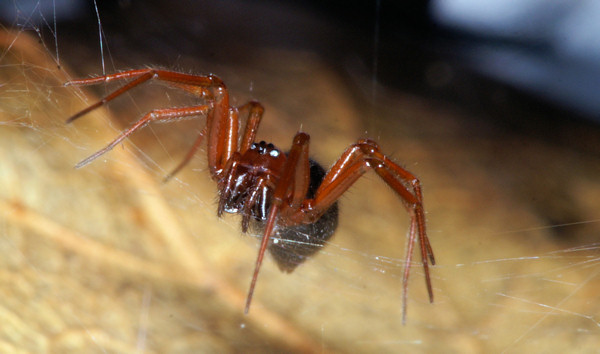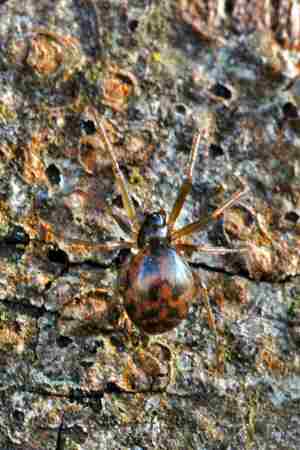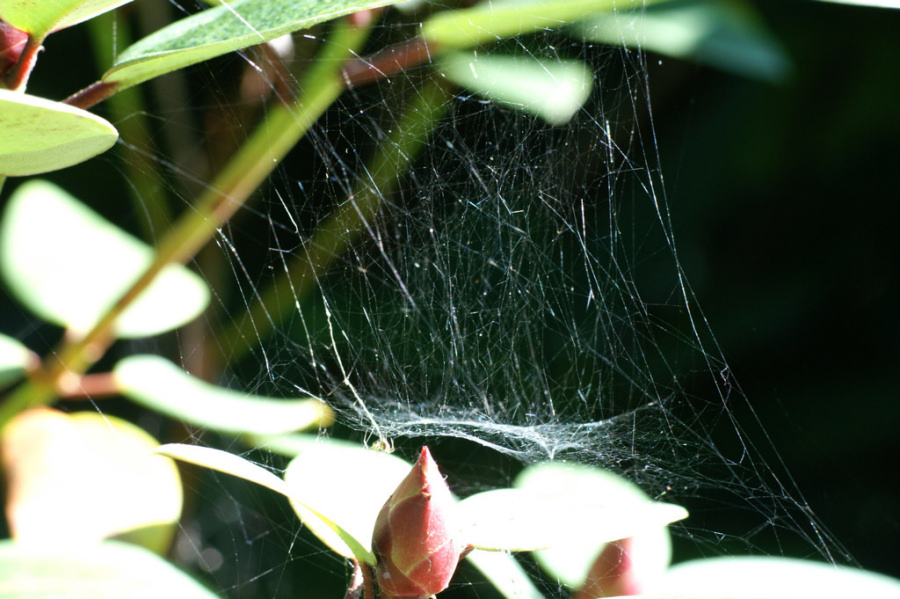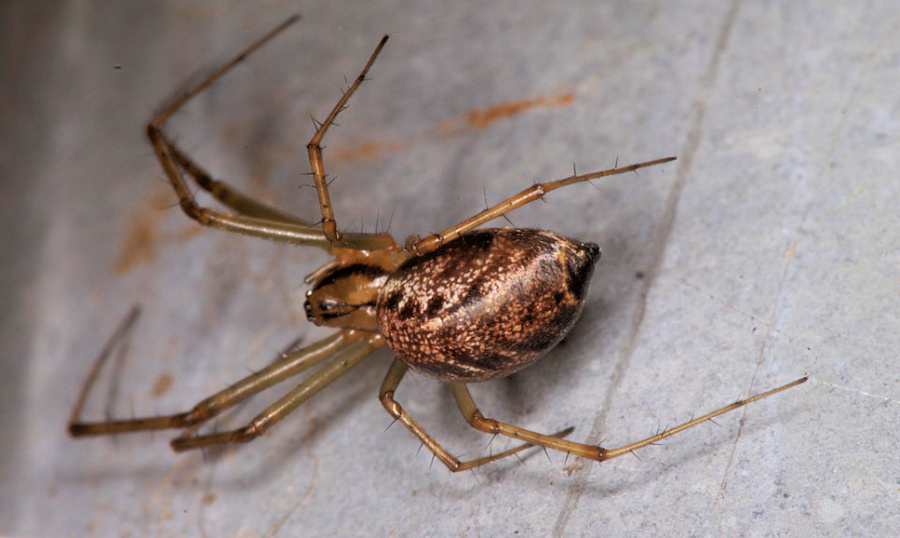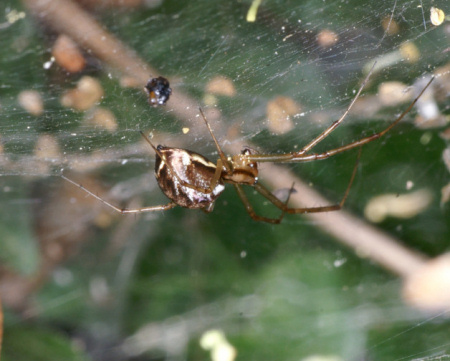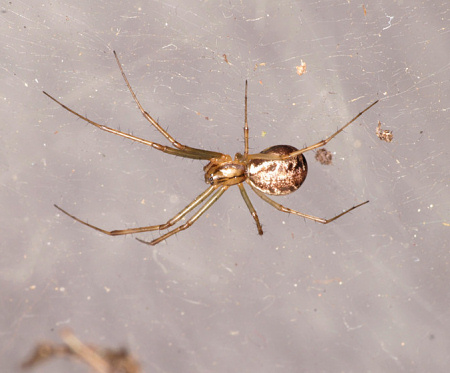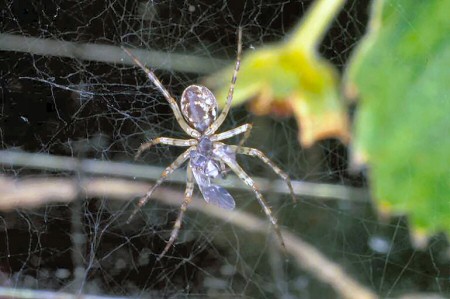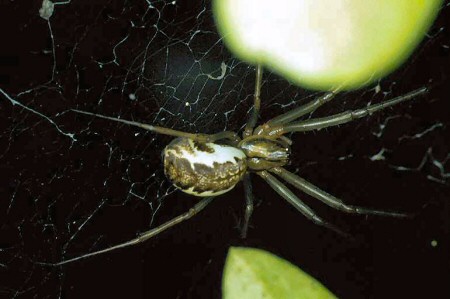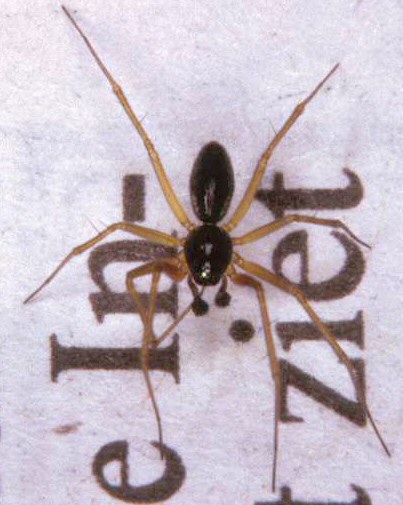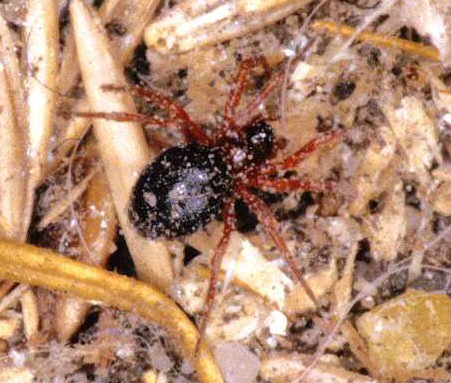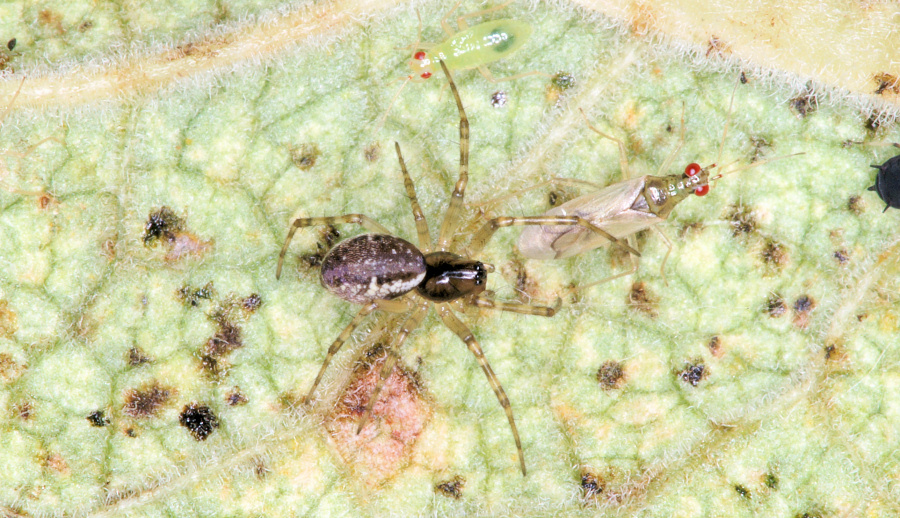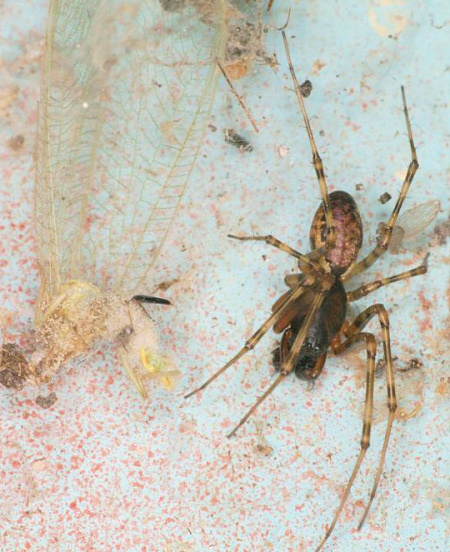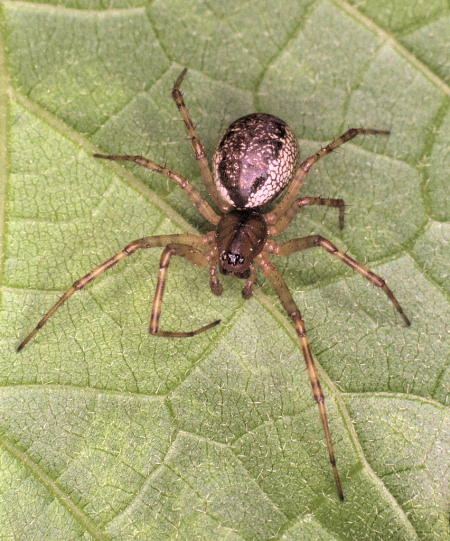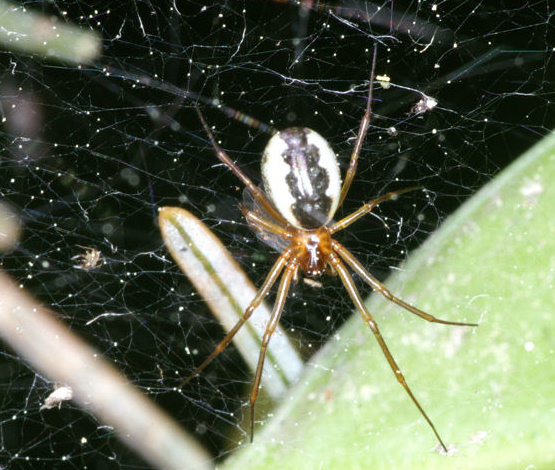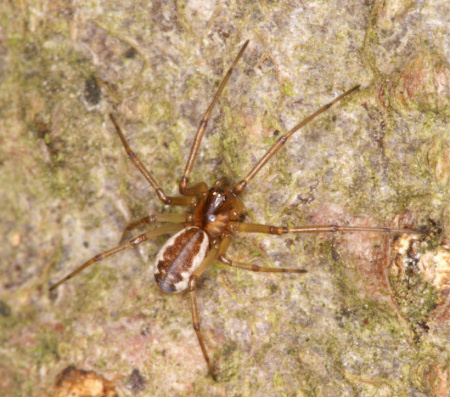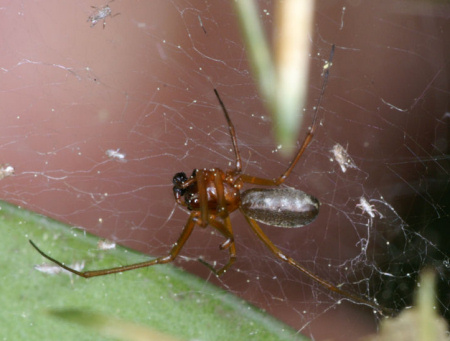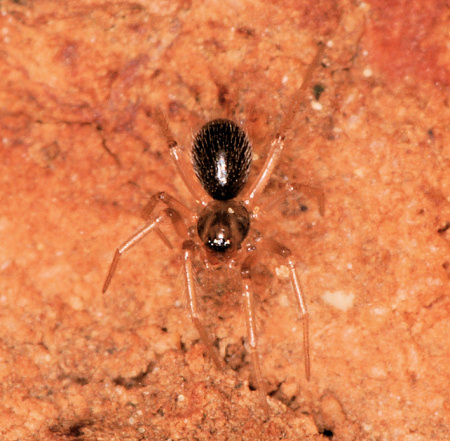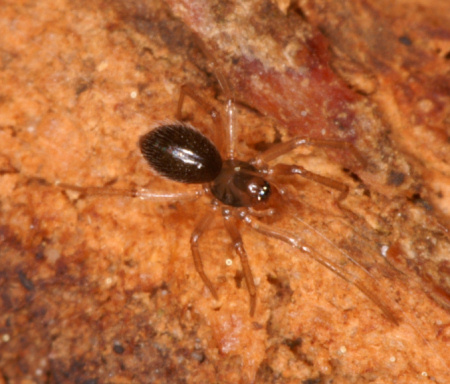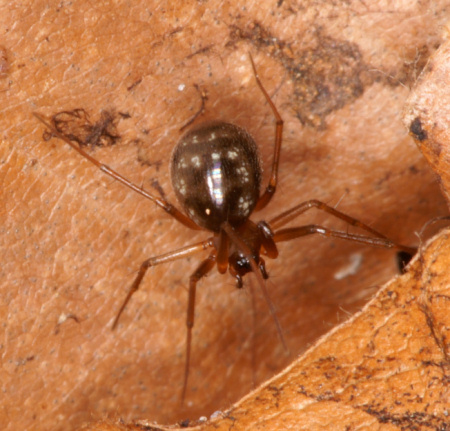
This is a very large family with more than 4289 species (June 2004) in 540 genera worldwide. In our region there are more than 300 species. Most of them are too small to recognize in the field.
Most of the spiders of this family weave sheet like webs and the spider hangs
under the web. Above the sheets the spider inserts scaffolding of threads.
Insects fly against these strands and falls onto the web where they are caught.
The spider bites through the web to paralyze her prey.
They are referred too as dwarf spiders. In the British Isles, they are called
money spiders.
Nearly half of the spiders in Europe are member of this family. Their size is between 4 - 10 mm. Most of them have dark colours.
Members of this family occupy almost every spot on the world, from the
Himalaya to beaches, from Antarctica to the tropical forests.
They reach these places because the spiders can fly by wire, called "ballooning".
The spider raises her abdomen and releases a thread in the breeze that grows
longer and longer until the upward lift is sufficient and the spider is lifted.
They can reach heights of up to 10000 meter and are transported to every spot on
the world. They are often one of the first inhabitants of a devastated area like
after the eruption of the Krakatau in August 1883. In May 1884 scientist already
reported microscopic spiders spinning their webs.
Gossamer is connected with ballooning and the word comes from
"goose summer". It is the moment that millions of spiders are taking off or
landing.
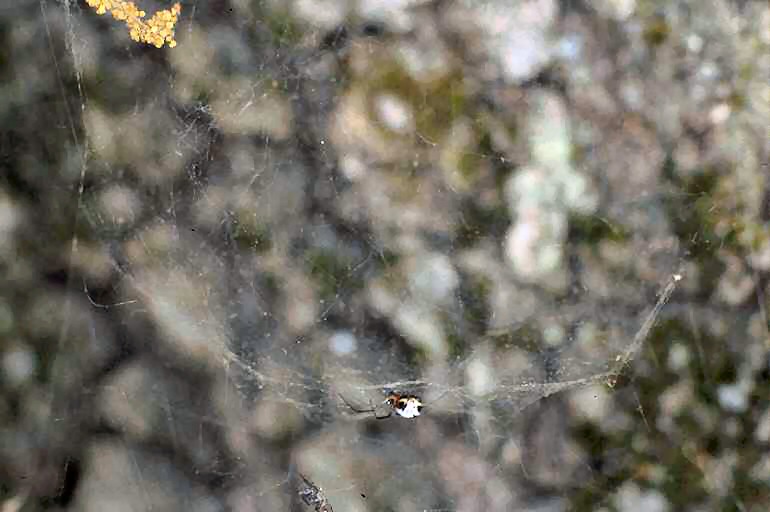
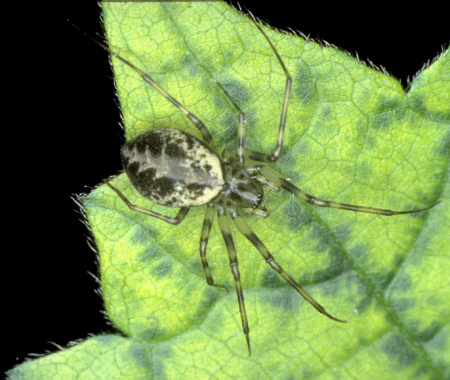
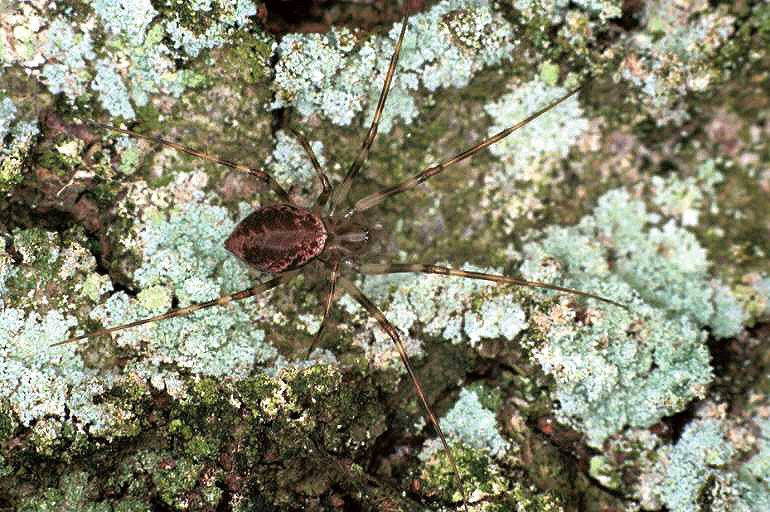
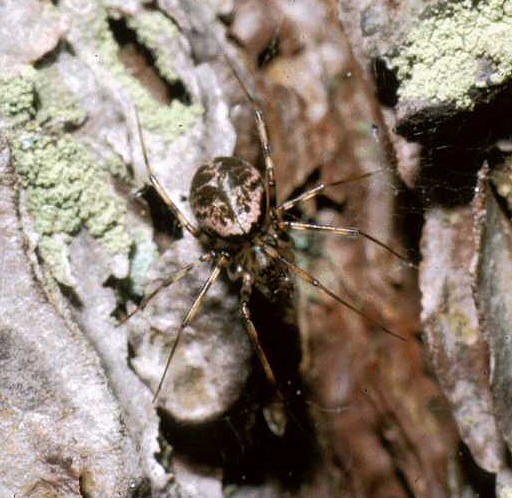
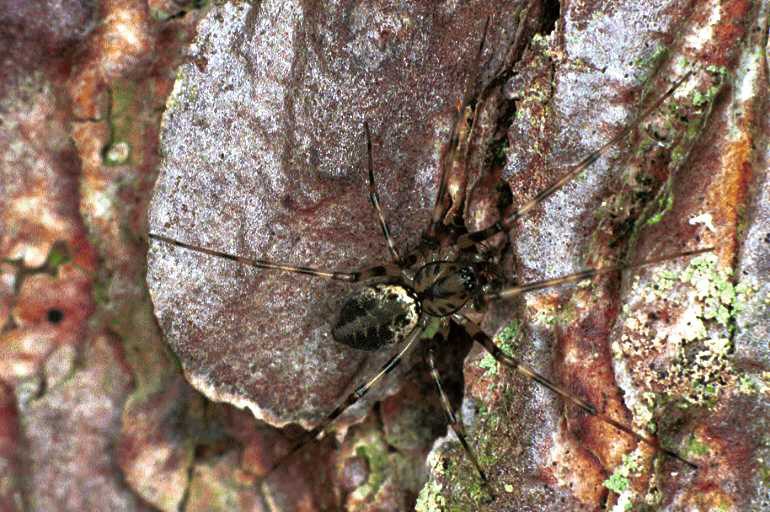
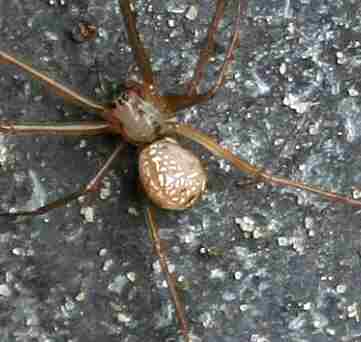

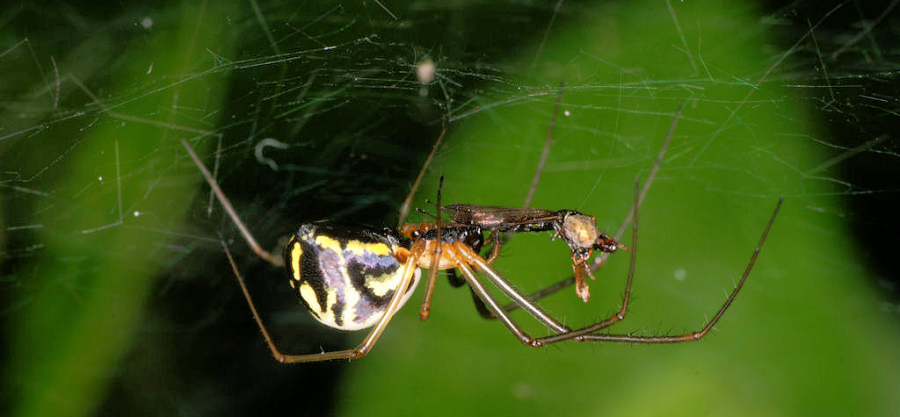


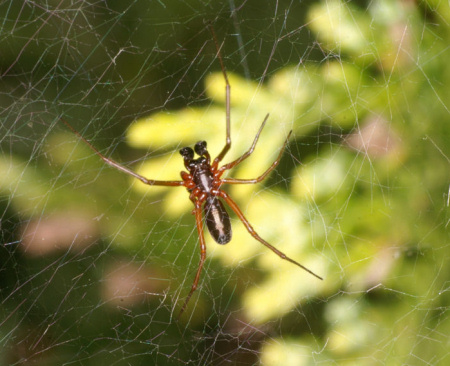
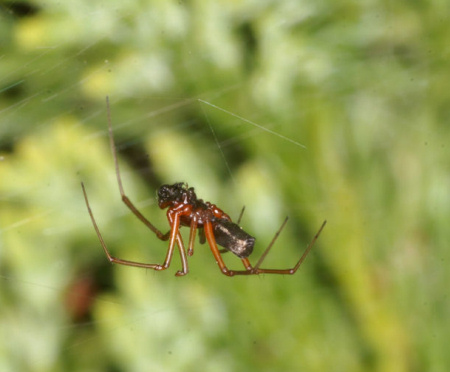


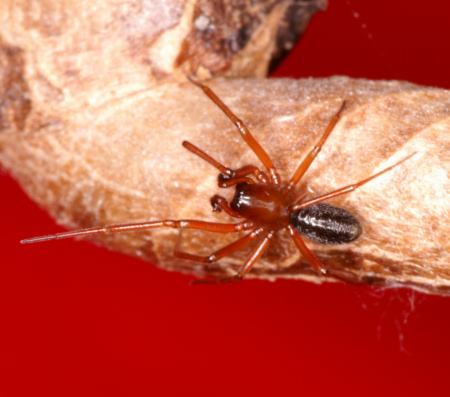 male
male 